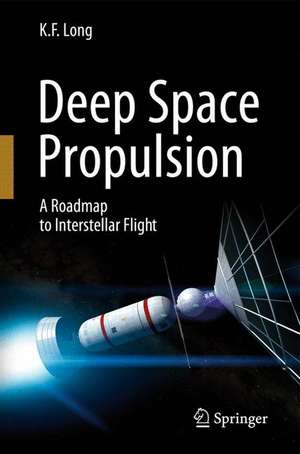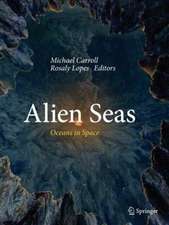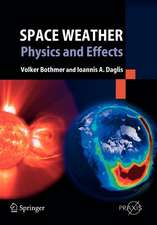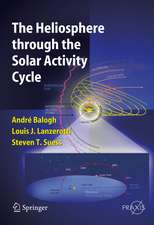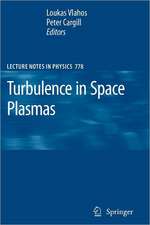Deep Space Propulsion: A Roadmap to Interstellar Flight
Autor K. F. Longen Limba Engleză Paperback – 24 noi 2011
In order to reach the nearest stars, we must first develop a propulsion technology that would take our robotic probes there in a reasonable time. Such propulsion technology has radically different requirements from conventional chemical rockets, because of the enormous distances that must be crossed. Surprisingly, many propulsion schemes for interstellar travel have been suggested and await only practical engineering solutions and the political will to make them a reality. This is a result of the tremendous advances in astrophysics that have been made in recent decades and the perseverance and imagination of tenacious theoretical physicists. This book explores these different propulsion schemes – all based on current physics – and the challenges they present to physicists, engineers, and space exploration entrepreneurs.
This book will be helpful to anyone who really wants to understand the principles behind and likely future course of interstellar travel and who wants to recognizes the distinctions between pure fantasy (such as Star Trek’s ‘warp drive’) and methods that are grounded in real physics and offer practical technological solutions for exploring the stars in the decades to come.
Preț: 336.29 lei
Nou
Puncte Express: 504
Preț estimativ în valută:
64.36€ • 69.88$ • 54.06£
64.36€ • 69.88$ • 54.06£
Carte disponibilă
Livrare economică 01-15 aprilie
Preluare comenzi: 021 569.72.76
Specificații
ISBN-13: 9781461406068
ISBN-10: 1461406064
Pagini: 392
Ilustrații: XXI, 367 p. 73 illus., 22 illus. in color.
Dimensiuni: 155 x 235 x 23 mm
Greutate: 0.57 kg
Ediția:2012
Editura: Springer
Colecția Springer
Locul publicării:New York, NY, United States
ISBN-10: 1461406064
Pagini: 392
Ilustrații: XXI, 367 p. 73 illus., 22 illus. in color.
Dimensiuni: 155 x 235 x 23 mm
Greutate: 0.57 kg
Ediția:2012
Editura: Springer
Colecția Springer
Locul publicării:New York, NY, United States
Public țintă
Popular/generalCuprins
Foreword.- Preface.- Chapter 1: Reaching for the Stars.- Chapter 2: The Dream of Flight and the Vision of Tomorrow.- Chapter 3: Fundamental Limitations to Achieving Interstellar Flight.- Chapter 4: Aviation - The Pursuit of Speed, Distance and Height.- Chapter 5: Astronautics - The Development and Science of Rockets.- Chapter 6: Exploring The Solar System and Beyond.- Chapter 7: Exploring Other Star Systems.- Chapter 8: Solar System Explorers - Historical Spacecraft.- Chapter 9: Electric and Nuclear-Based Propulsion.- Chapter 10: Sails and Beams.- Chapter 11: Nuclear Fusion Propulsion.- Chapter 12: External Nuclear Pulse Propulsion.- Chapter 13: Towards Relativistic Propulsion - Antimatter and the Interstellar Ramjet.- Chapter 14: Aerospace Design Principles in Interstellar Flight.- Chapter 15: The Scientific, Cultural and Economic Costs of Interstellar Flight.- Chapter 16: The Role of Speculative Fiction in Driving Technology.- Chapter 17: Realizing the Technological Future and The Roadmap To The Stars.- Chapter 18: From Imagination to Reality.- Epilogue.- Appendices.- Index.
Recenzii
From the book reviews:
“This is a readable, insightful and personal history of interstellar travel thinking with a focus on propulsion … . each chapter has an ‘introduction’ providing a short overview of the chapter while the ‘practice exercises’ at the end are to stimulate discussion. … The theoretical background presented here by Long deserves to be read and the bibliography deserves to be considered as a starting point for anyone interested in these topics. The colour illustrations are very helpful.” (Anders Hansson, The Aeronautical Journal, November, 2014)
“Kelvin has taken the reader from the basic, simple principles of reaction propulsion … and on to the exotic world of deep-space journeys. … The most valuable aspect of this book is that it never bucks difficult issues … . If there is one book from which to gather all essential aspects of deep-space propulsion and stellar transportation systems this is it. It is both required reading and an essential reference … . useful for the layreader and the professional.” (Spaceflight, Vol. 54 (7), July, 2012)
“This is a readable, insightful and personal history of interstellar travel thinking with a focus on propulsion … . each chapter has an ‘introduction’ providing a short overview of the chapter while the ‘practice exercises’ at the end are to stimulate discussion. … The theoretical background presented here by Long deserves to be read and the bibliography deserves to be considered as a starting point for anyone interested in these topics. The colour illustrations are very helpful.” (Anders Hansson, The Aeronautical Journal, November, 2014)
“Kelvin has taken the reader from the basic, simple principles of reaction propulsion … and on to the exotic world of deep-space journeys. … The most valuable aspect of this book is that it never bucks difficult issues … . If there is one book from which to gather all essential aspects of deep-space propulsion and stellar transportation systems this is it. It is both required reading and an essential reference … . useful for the layreader and the professional.” (Spaceflight, Vol. 54 (7), July, 2012)
Notă biografică
Kelvin Long was born in Cambridge, England. He holds a Bachelors degree in Aerospace Engineering and a Masters degree in Astrophysics, both from Queen Mary College University of London. He has been a college and university teacher and served for several years in the Parachute Regiment Volunteer Reserve of the British Army. He currently works as a physicist in industry. He has published numerous papers and articles on the subject of astrophysics and space exploration and is currently the Assistant Editor of the Journal of the British Interplanetary Society. He has also contributed to many other publications on interstellar travel. He has appeared on the Austrian Broadcasting Radio Station FM4 as well as in the documentary How to Colonize the Stars produced by Christian Darkin. He is a Fellow of the Royal Astronomical Society, a chartered member of the Institute of Physics, a member of The Planetary Society, a member of the American Institute of Aeronautics & Astronautics, Fellow of the British Interplanetary Society, and an associate member of the International Association for Astronomical Artists. He is a Practitioner of the Tau Zero Foundation, which actively promotes and coordinates international research into interstellar flight and within this capacity was the co-founder of an interstellar research initiative called Project Icarus. He is happily married to Gemma and likes to spend his spare time reading and writing science fiction, spacecraft model building, and using his Schmidt-Cassegrain telescope.
Textul de pe ultima copertă
As humans take their first tentative steps off our home planet, and debate the costs/benefits of sending people back to the Moon and perhaps on to Mars, we must also start to make plans for the day when we will venture forth as pioneers farther out into the Solar System and beyond - perhaps far, far beyond - to explore and settle new worlds around other stars. It is vital that we develop the deep space propulsion technologies that will take us there, first to explore with robotic probes, then to follow ourselves. This is necessary so that if anything catastrophic happened to Earth, our species would survive. And the possibilities for catastrophe are great. An impacting asteroid ended the reign of the dinosaurs, and today we have many other threats such as global war, climate change, pollution, resource limitations and overpopulation.
In this book, Kelvin F. Long takes us on all the possible journeys - the mission targets, the technologies we might use to power such journeys, and what scientific knowledge we are seeking to obtain upon arriving there.
Despite the problems of today it is important that we take a long-term view for the future of our species. In fact, the only way to assure a future is to start planning for it now and then progress incrementally. Today, society is not in a position to launch the types of missions outlined in this book, mainly due to a lack of political motivations to try and the economic cost for launching it. But if we start to develop these technologies today, then it is likely that one of them will come to technological maturity at some point in the coming centuries and will power our species to the stars. Our commitment today to achieve near-term goals will ensure a tomorrow for the generations ahead.
In this book, Kelvin F. Long takes us on all the possible journeys - the mission targets, the technologies we might use to power such journeys, and what scientific knowledge we are seeking to obtain upon arriving there.
Despite the problems of today it is important that we take a long-term view for the future of our species. In fact, the only way to assure a future is to start planning for it now and then progress incrementally. Today, society is not in a position to launch the types of missions outlined in this book, mainly due to a lack of political motivations to try and the economic cost for launching it. But if we start to develop these technologies today, then it is likely that one of them will come to technological maturity at some point in the coming centuries and will power our species to the stars. Our commitment today to achieve near-term goals will ensure a tomorrow for the generations ahead.
Caracteristici
Brings together serious ideas from scientists around the world investigating groundbreaking new technologies for spacecraft propulsion systems Separates the realistic from the fantastic and makes clear which popular concepts in science fiction are based on unproven physics and which are based on real science Presents convincing arguments on how we can achieve the seemingly impossible task of sending robotic explorers many millions of miles to distant stars in the next few decades Includes supplementary material: sn.pub/extras
